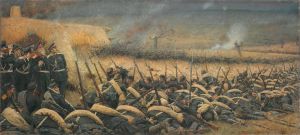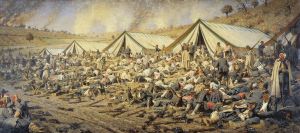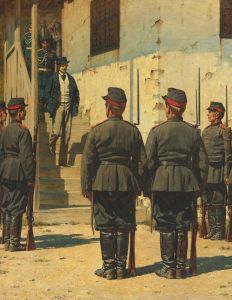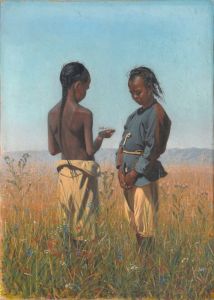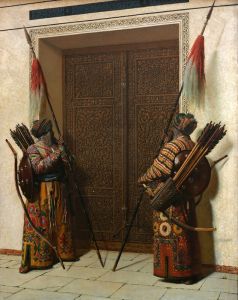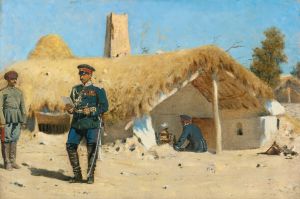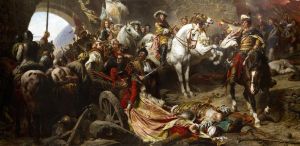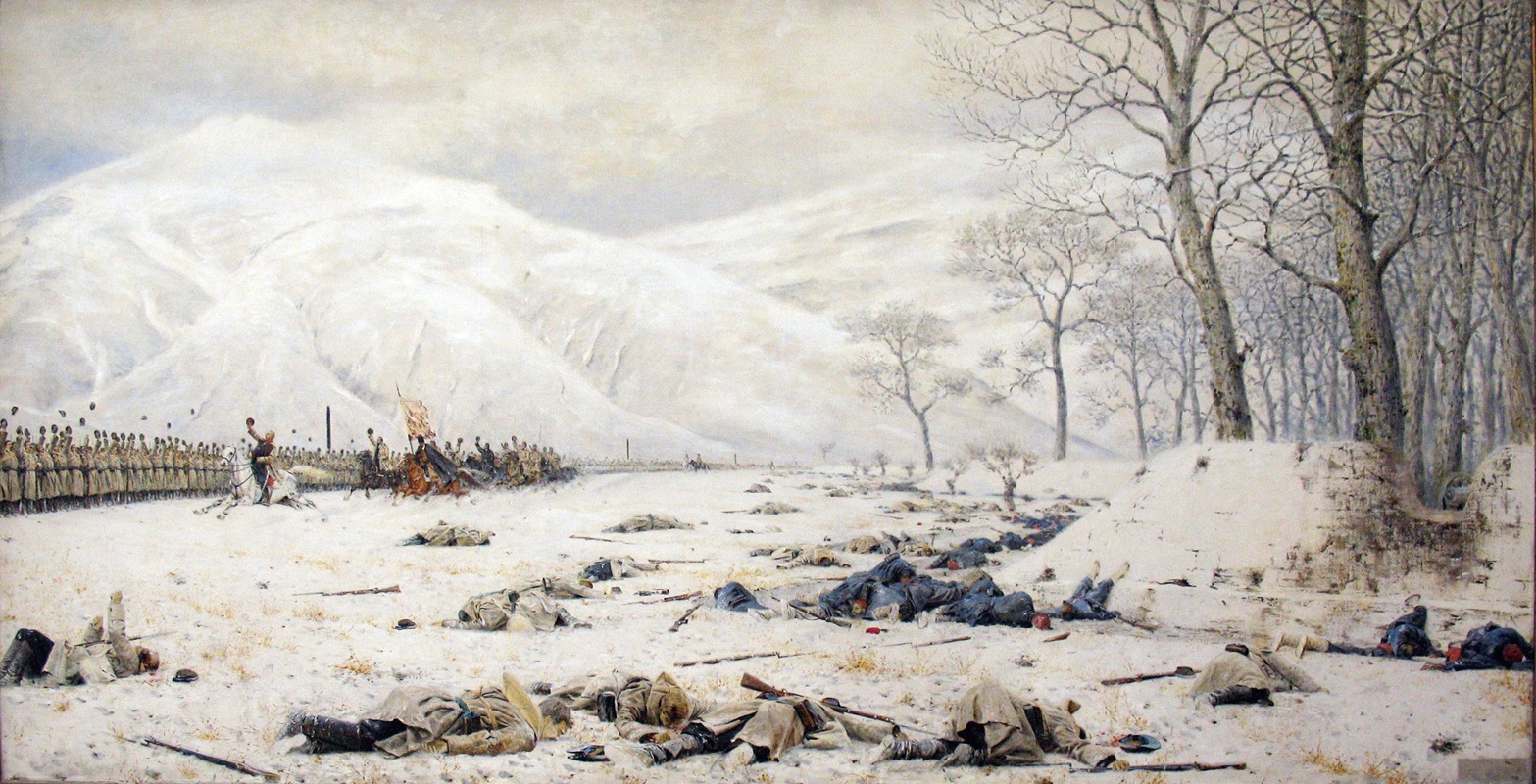
Battlefield at the Shipka
A hand-painted replica of Vasily Vereshchagin’s masterpiece Battlefield at the Shipka, meticulously crafted by professional artists to capture the true essence of the original. Each piece is created with museum-quality canvas and rare mineral pigments, carefully painted by experienced artists with delicate brushstrokes and rich, layered colors to perfectly recreate the texture of the original artwork. Unlike machine-printed reproductions, this hand-painted version brings the painting to life, infused with the artist’s emotions and skill in every stroke. Whether for personal collection or home decoration, it instantly elevates the artistic atmosphere of any space.
"Battlefield at the Shipka" is a painting by the renowned Russian artist Vasily Vereshchagin, created in 1878. Vereshchagin is widely recognized for his war-themed works, which often depict the brutal realities of conflict. This particular painting is part of his Balkan series, which he produced after traveling to the region during the Russo-Turkish War (1877-1878).
The painting captures the aftermath of the Battle of Shipka Pass, a significant engagement during the Russo-Turkish War. The battle took place in the Shipka Pass, a strategic mountain pass in the Balkan Mountains of Bulgaria. The conflict was a crucial part of the war, as control of the pass was vital for the movement of troops and supplies.
Vereshchagin's "Battlefield at the Shipka" is notable for its stark and unflinching portrayal of the battlefield. The painting shows a desolate landscape littered with the bodies of fallen soldiers, both Russian and Ottoman. The artist's attention to detail is evident in the realistic depiction of the terrain and the somber, almost monochromatic color palette, which underscores the grim reality of war.
Vereshchagin was known for his commitment to authenticity and often placed himself in dangerous situations to accurately capture the scenes he painted. His works are characterized by their documentary-like quality, and "Battlefield at the Shipka" is no exception. The painting serves as a powerful anti-war statement, reflecting Vereshchagin's belief in the futility and horror of armed conflict.
The Battle of Shipka Pass itself was a series of four battles fought between July 1877 and January 1878. The Russian and Bulgarian forces, fighting against the Ottoman Empire, managed to hold the pass despite being outnumbered and facing harsh winter conditions. The successful defense of Shipka Pass was a turning point in the war, contributing significantly to the eventual Russian victory and the liberation of Bulgaria from Ottoman rule.
Vereshchagin's work, including "Battlefield at the Shipka," was both celebrated and controversial in his time. His unvarnished depictions of war challenged the romanticized views of battle that were common in 19th-century art. Instead of glorifying war, Vereshchagin's paintings highlighted its devastating human cost.
"Battlefield at the Shipka" is housed in the State Tretyakov Gallery in Moscow, one of the most important art museums in Russia. The gallery's collection includes many of Vereshchagin's works, allowing visitors to gain a comprehensive understanding of his artistic legacy and his contributions to war art.
In summary, "Battlefield at the Shipka" by Vasily Vereshchagin is a poignant and historically significant painting that captures the harsh realities of the Russo-Turkish War. Through his meticulous attention to detail and commitment to authenticity, Vereshchagin provides a powerful visual commentary on the brutality of war and its impact on humanity.







